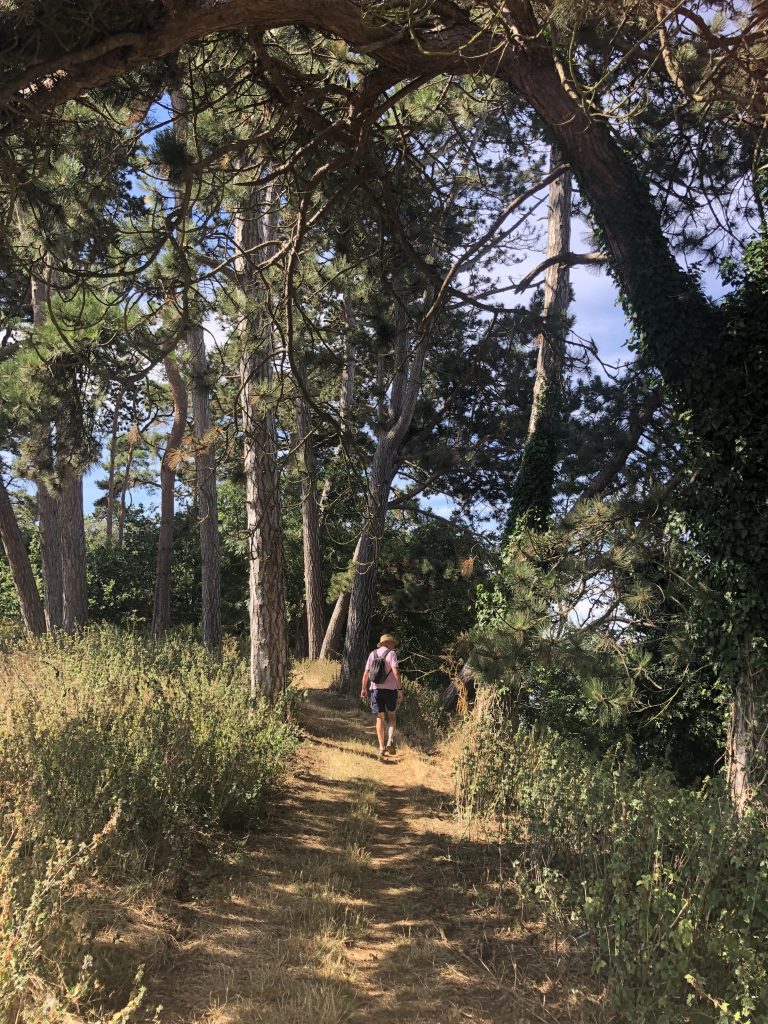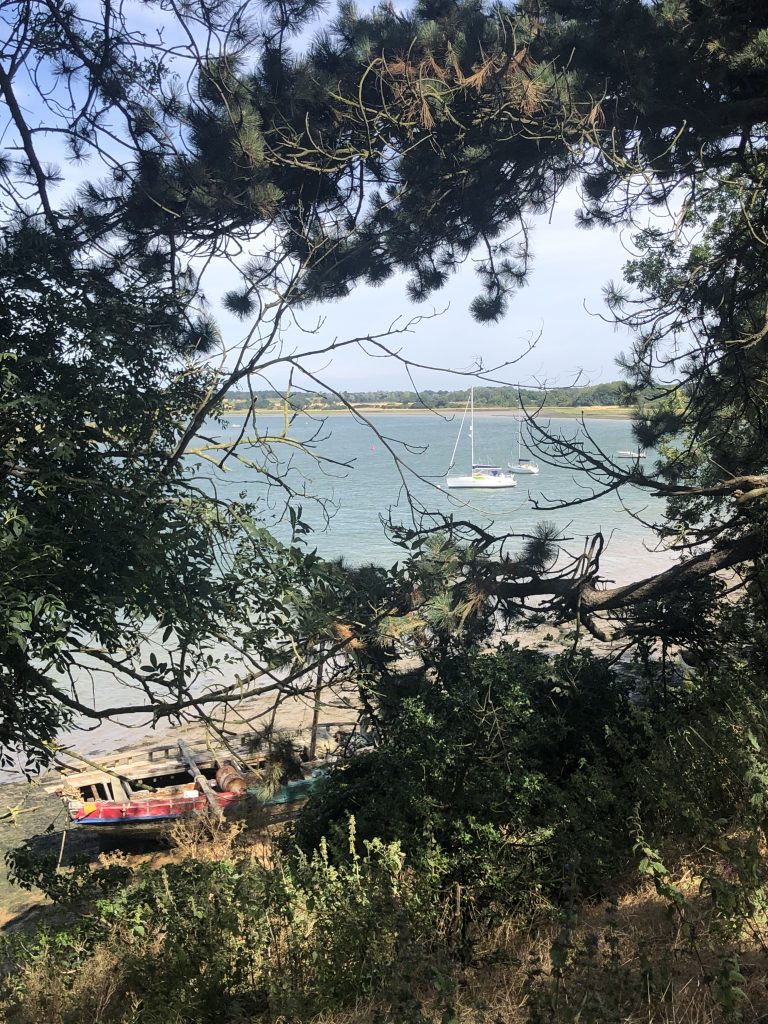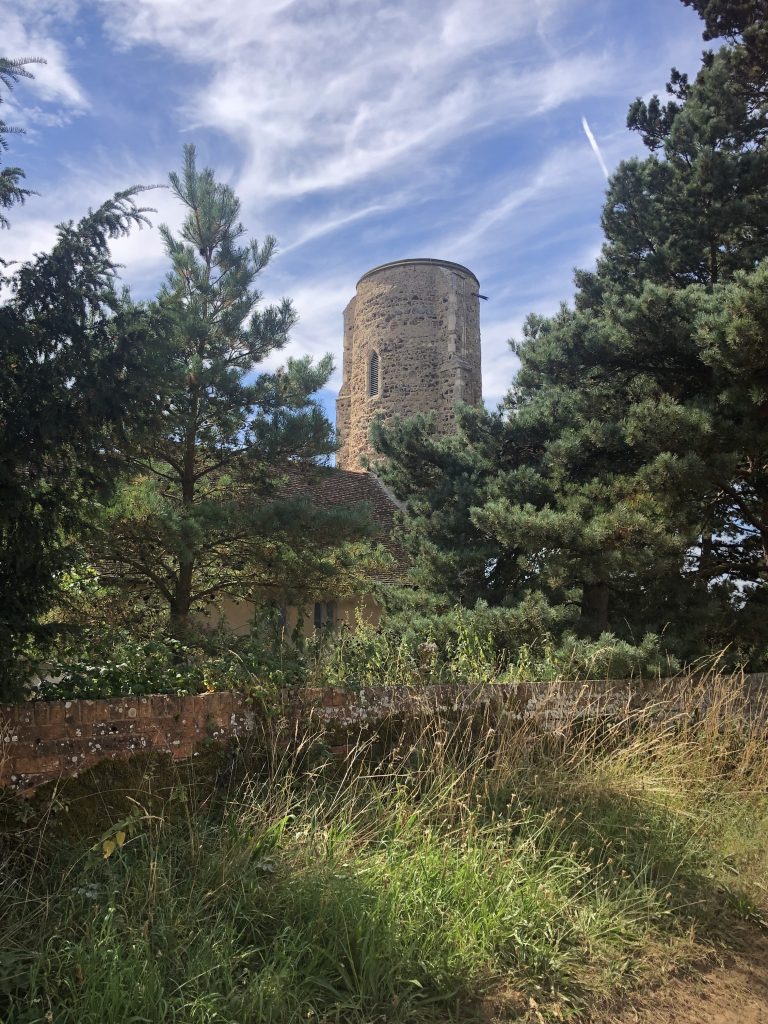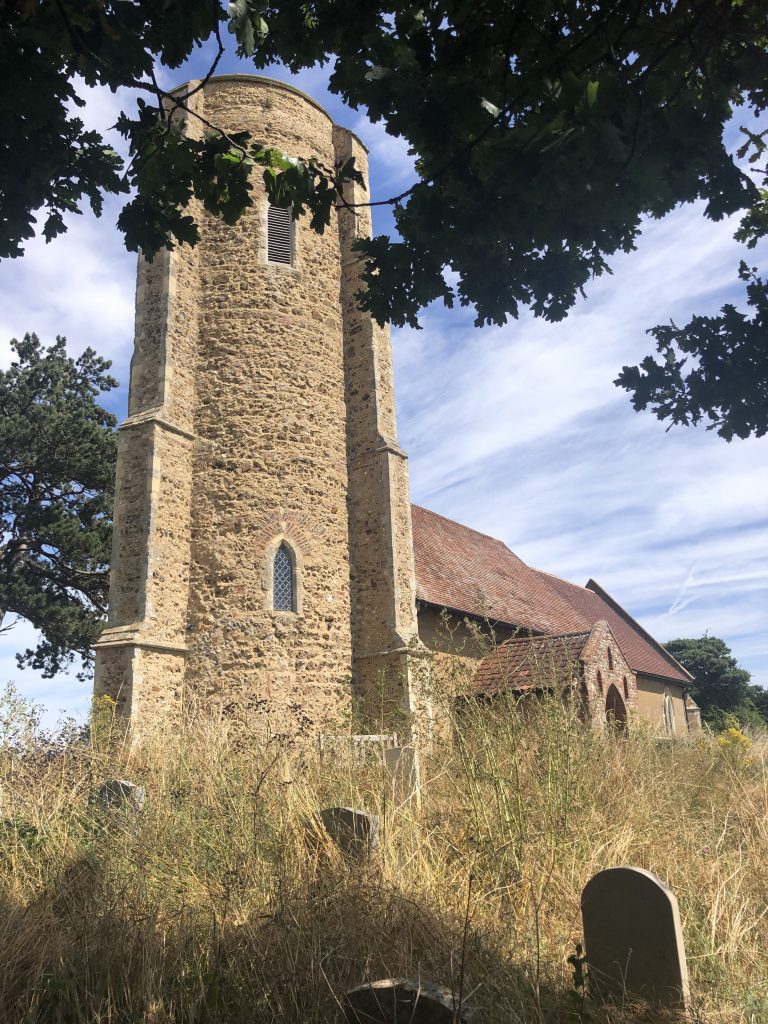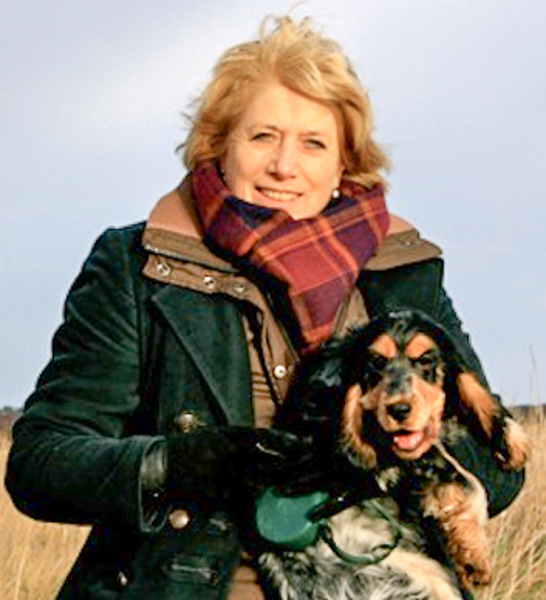by Sue Ryder Richardson
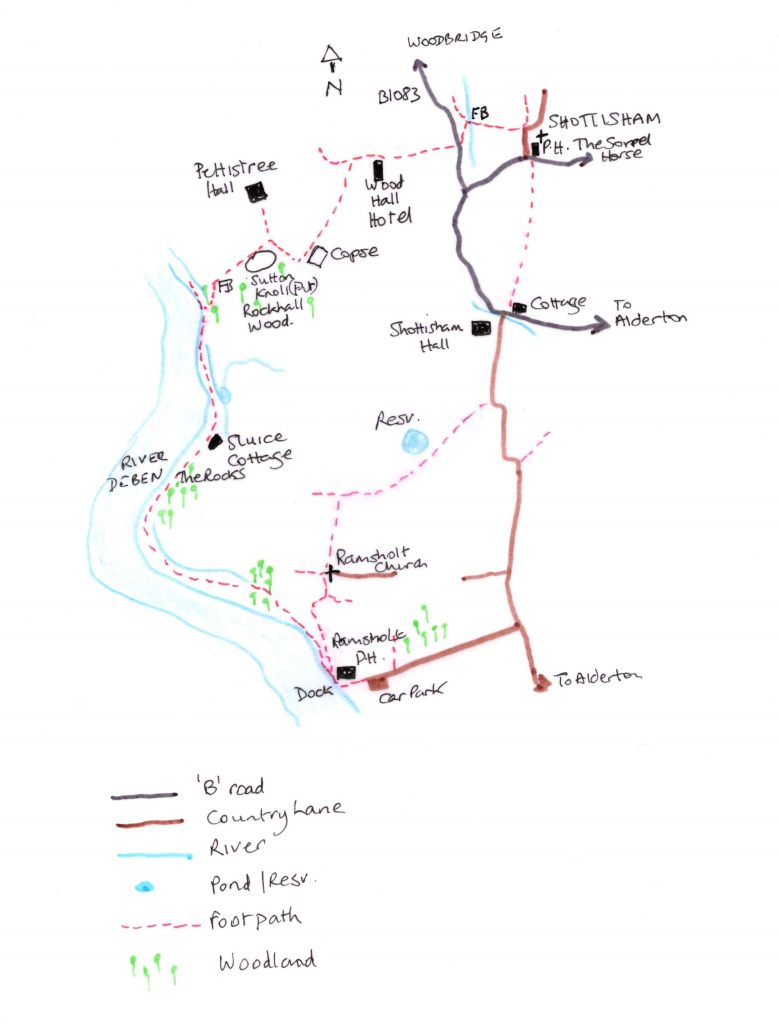
Like the River Deben itself, this walk is one of two parts: from dry pastoral uplands to the salty, tidal marshes and mudflats. Start in the tiny village of Shottisham, a place where time has stood still; a cluster of cottages nestle around the picturesque Sorrel Horse pub, a path leads up to St Margaret’s church, and a playground. There is a white weatherboarded watermill set Constable-like amongst trees, and all this is surrounded by cornfields and pastures. The village captures the essence of Ronald Blythe, as it settles in a landscape that recalls the horse-drawn plough of George Ewart Evans.
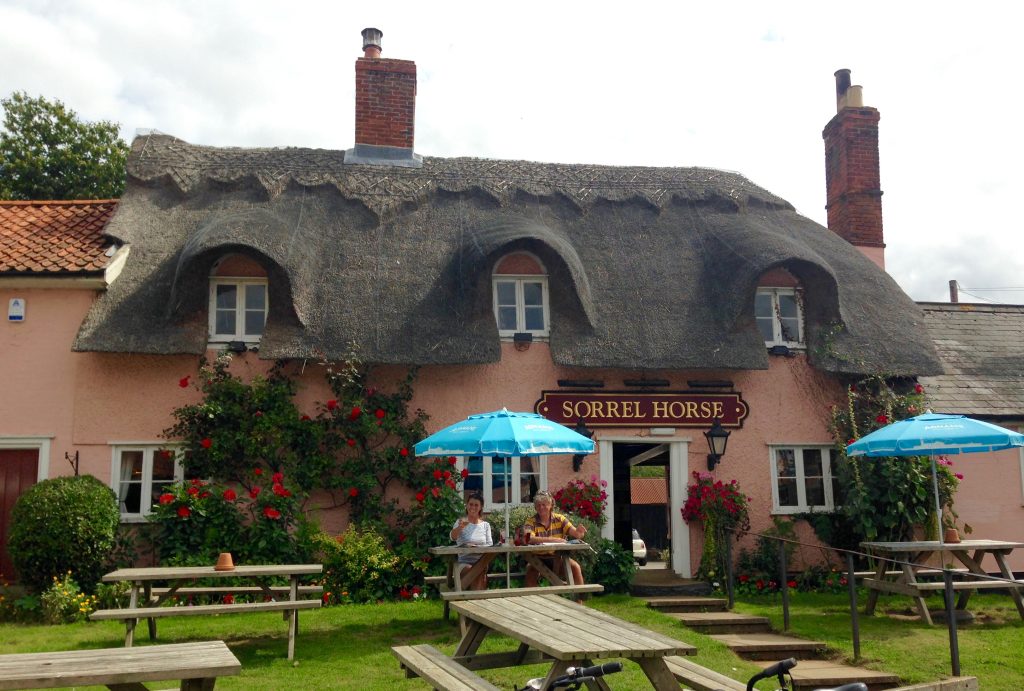
The Sorrel Horse.
The history of Shottisham can be traced back before the Doomsday Book. A Saxon church stood on the same knoll as the present grade two listed church, which was built in 1313 by monks from Butley Abbey however, it has been much altered over the intervening years. It is possible that the Sorrel Horse Inn predated this medieval church, housing those involved in its construction. There has been a watermill, fed by the springs of Church Lane, for centuries, and the current one was in use until the 1950s.
It almost feels an intrusion to drive into this peaceful village and park, but once parked, take Church Lane in front of The Sorrel Horse, stopping briefly to see the church on your right, before continuing ahead past cottages, and the delightful crenelations of Tower Cottage. Turn left onto the footpath by the village allotments and on through a gate into a large meadow. Cross the bridge over Shottisham Creek, a tiny tributary of the Deben, and then bear diagonally left towards a gate in the corner of the field. Over the road, walk up the driveway of Wood Hall Hotel. Once past this splendid Elizabethan manor, take the first footpath on the left between fences. At the end of this track there is a small newly planted copse with a storyboard explaining that it replicates tree varieties found in a Pliocene Forest.
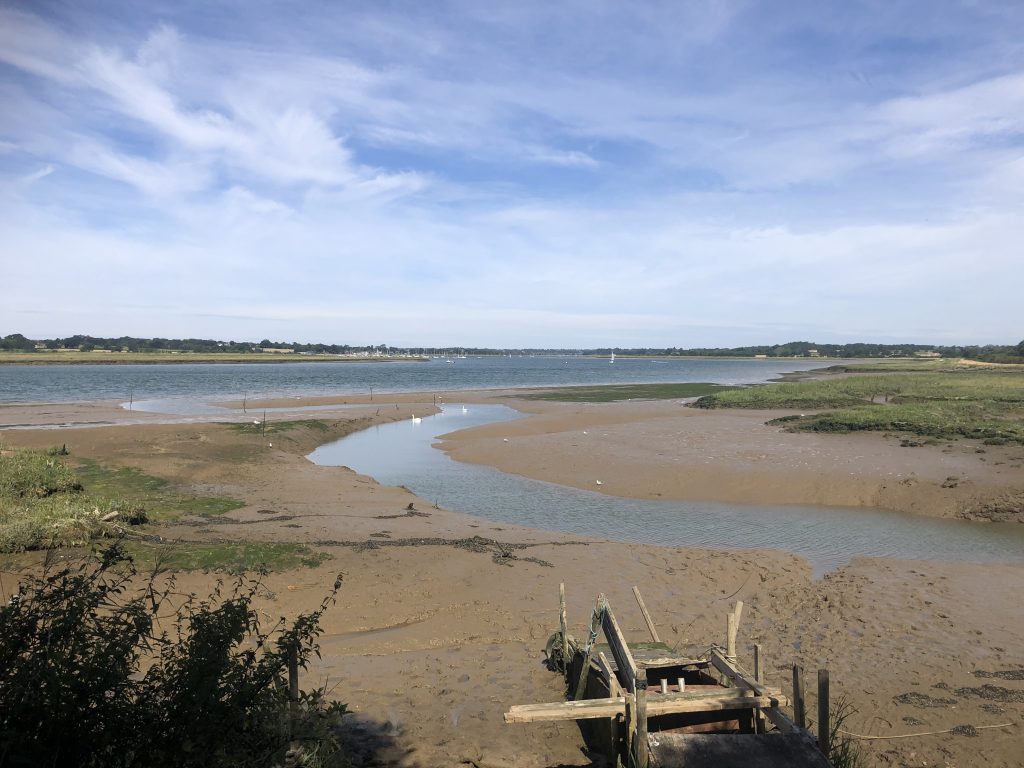
Riverscape.
Keep ahead through another gate and follow the path alongside a field until it bears right to pass Sutton Knoll. Here is another storyboard explaining the various geological crag formations of the land. Keep right for a short distance along the track towards Pettistree Hall, then very shortly turn left along the signed path across a field towards the river. It is important to keep to this path, as the more obvious one by the Knoll leads to private land. Here you will get your first glimpses over the River Deben to Waldringfield. At the end of the fields cross a marked footbridge and head diagonally left across a meadow, through a gate, into a copse. The trees open out onto the river wall where there are stunning riverscape views in both directions. Now turn left and follow the river wall.
It is here that you can appreciate just how big and remote the Deben can feel. The reed beds on the left shiver silver-fronded in today’s strong wind, their rustling sounding as metallic as cymbals, there is the creak of wings from rising flocks, geese send up harsh cries, and riverside there is the sigh of pockmarked mudflats, the slap and lap of water, the constant pecking of a myriad of waders, whilst above gulls wheel and squabble. And then, as if completely unaware of the orchestration below, graceful egrets rise in silence to fly away, insouciant.
The Rocks.
Just after Sluice Cottage the footpath rises to follow a field into a wood behind ‘The Rocks’. Here, the dappled light from the pines above the beach provides a rest bite from the river path and offer vignettes of riverscape between branches. Descend again to the river wall and continue through further woodland until reaching a left-hand path across the marsh to Ramsholt Church, where the walk continues. But a short distance ahead is the lure of the Ramsholt Arms, where a welcome drink awaits. We enjoyed a quiet half hour watching yachts bob on the ruffled waters, and children play in the sand.
Ramsholt Church.
Return to the route and on reaching the hedge below the Church, take steep steps up to All Saints. Although this church is more recent, it is well worth visiting the spot where an ecclesiastical building has stood for over a thousand years. Take the path through the wildflower strewn churchyard, to find the gate on the north side, turn left back onto the footpath and then right to meet a ‘T-junction’ Another right here takes you on a long, somewhat dusty bridleway, to the Ramsholt Lane. Turn left, and at the main Bawdsey Road, cross to the footpath opposite beside a cottage. This track leads you directly back into Shottisham opposite the Sorrel Horse.
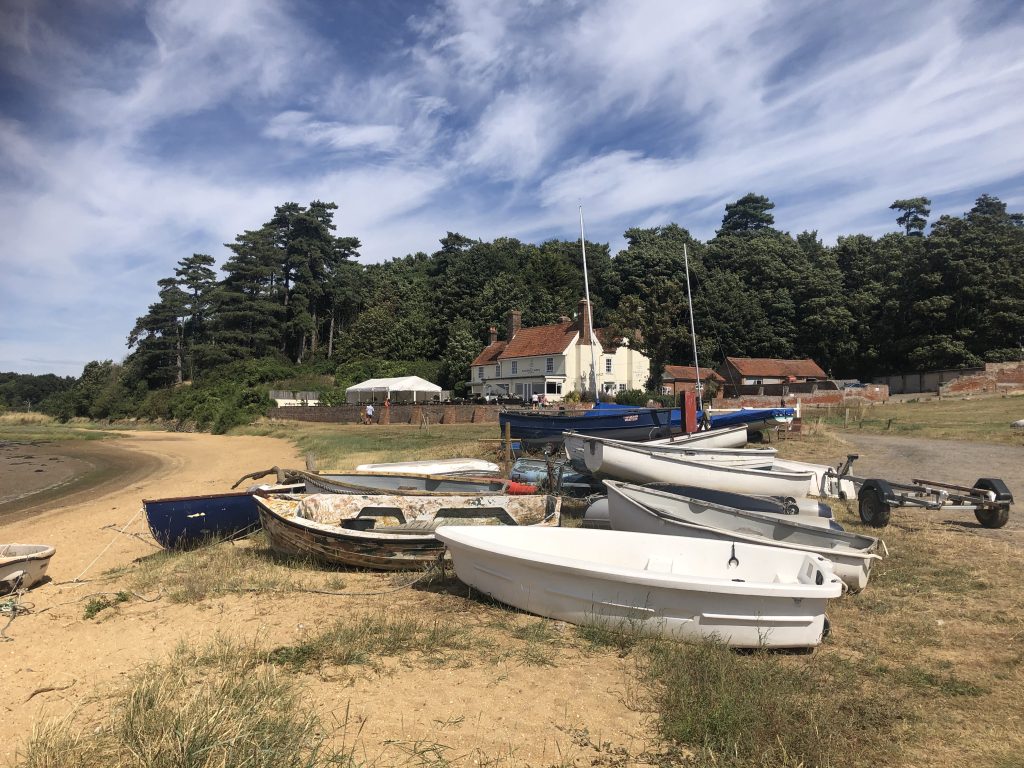
The Ramsholt Arms.
We sat outside the Inn soaking up the August sun as we enjoyed a delicious lunch. The walk back from The Ramsholt Arms to the Sorrel Horse took under an hour, including quite a prolonged stop in the church, so whilst the latter part of the walk may not have all the visual charms of the first, the welcome at the Sorrel Horse, certainly made up for what had seemed a long, dusty track to the road.
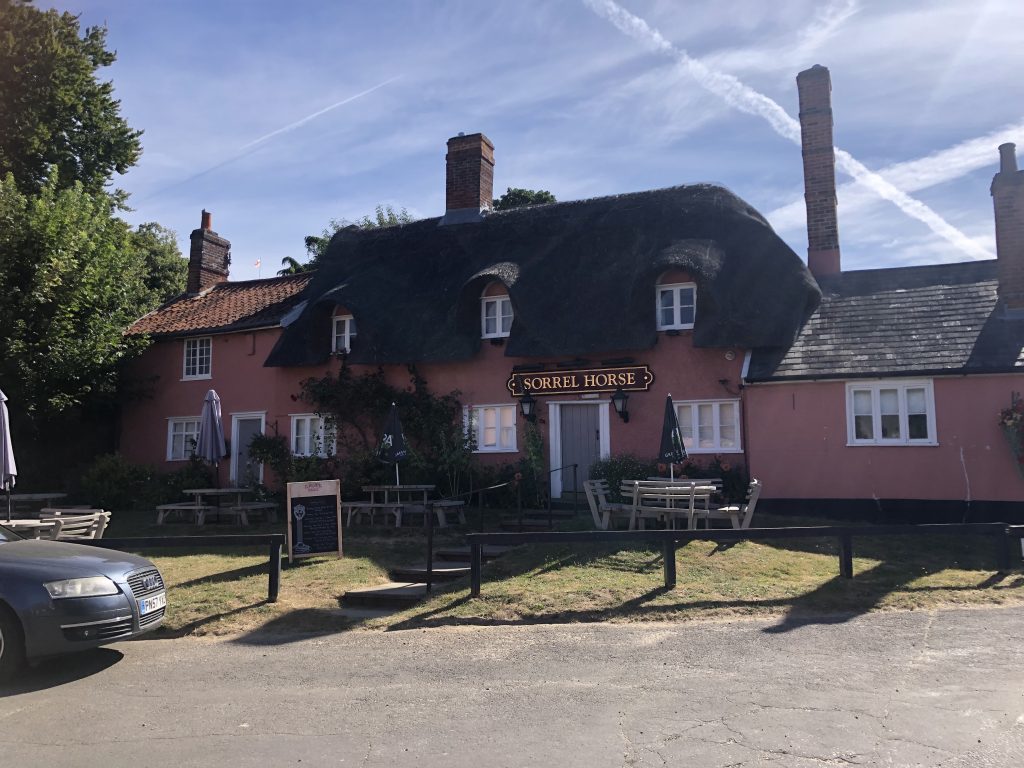
The Sorrel Horse.
Sue Ryder Richardson
Sue Ryder Richardson was born in Suffolk and has explored it on foot for as long as she can remember.

